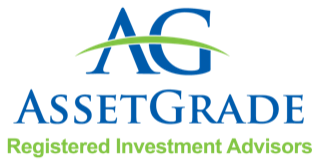
March Madness and the 60/40 Portfolio
By: Kate Hennessy, CFP®
So, which was born first? The March Madness tournament or the “60/40 Portfolio?” The legendary 60/40 portfolio dates back to 1926, and through 2021 had enjoyed a nice steady average annualized return 9.1%. For you basketball fanatics, the March Madness tournament was born 13 years later on March 17, 1939 and was the idea of Ohio State head coach Howard Olsen.
The “60/40 portfolio” which has historically been weighted with 60% stocks and 40% bonds was introduced about a century ago and has come under fire recently. In the past, using this method of investing had provided investors with slow but steady rates of returns, the 60% allocation to equities had provided investors with capital appreciation while the 40% allocation to bonds provided a method to reduce risk and capture income.
So, what changed? At the end of 2021, stocks marched to all-time highs, US large cap valuations were at all-time highs, and bond yields fell again to unprecedented levels. When close to 40% of your portfolio are in bonds, the lower bond yields can have a long-term impact on the overall return of your portfolio. To compound this issue, higher inflation (which we are all feeling) is impacting bonds. Investors earned a negative real yield in 2021 because the nominal interest rate they were paid on their bonds was actually lower than the rate of inflation. This dilemma creates an opportunity to review your portfolio and determine if there are ways to improve diversification, reduce risk and provide consistent returns.
At AssetGrade, we don’t manage a traditional “60/40 portfolio” for some of the reasons cited above as we’ve identified that true diversification lies outside of stocks and bonds. In lieu of the traditional “60/40 portfolio” we have 12+ asset classes represented in our proprietary portfolios. We’ve identified asset classes that provide more income and have lower correlations with stocks, so that they provide some cushion from moves in the stock market. We incorporate these asset classes into our portfolios, including high yield, emerging market debt, real estate and commodities. These additional asset classes not only improve diversification (the art of spreading dollars across a range of asset classes to reduce investment risk), they reduce risk and provide more consistent returns. If you are a DIY (“Do-It-Yourself”) investor you may want to examine your “60/40 portfolio” and reconfigure your portfolio and explore other investments that provide more income.
As stated above, this dilemma creates an opportunity to not only reconfigure your portfolio but to rebalance it as well. At AssetGrade, we don’t know what the future will hold, and there is no one-size-fits-all approach to investing, but we do know that diversification matters over the long-run and we rebalance our client’s diversified portfolios at least quarterly. If you are a DIY investor and would like us to review your portfolio, please feel free to reach out to us to discuss how we can help you Review, Reconfigure, and Rebalance.

